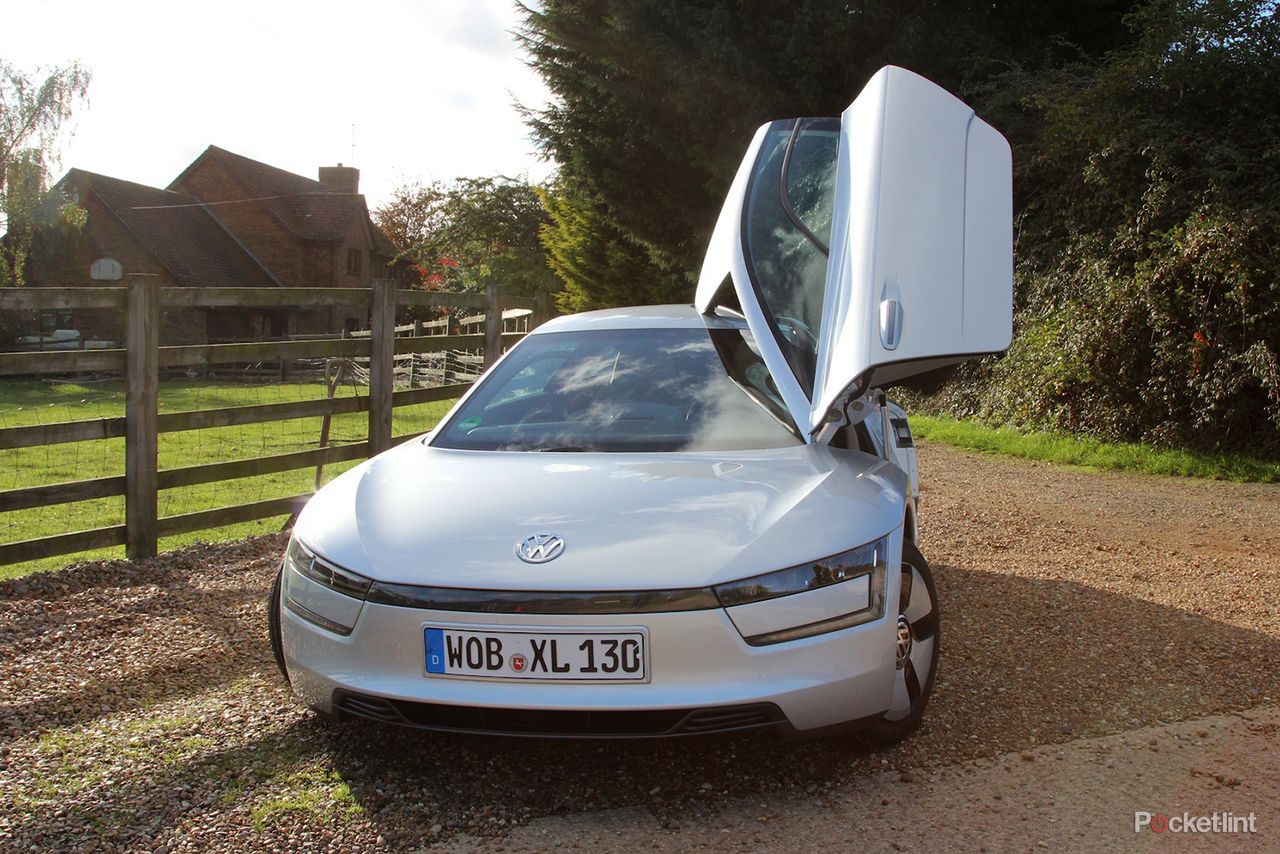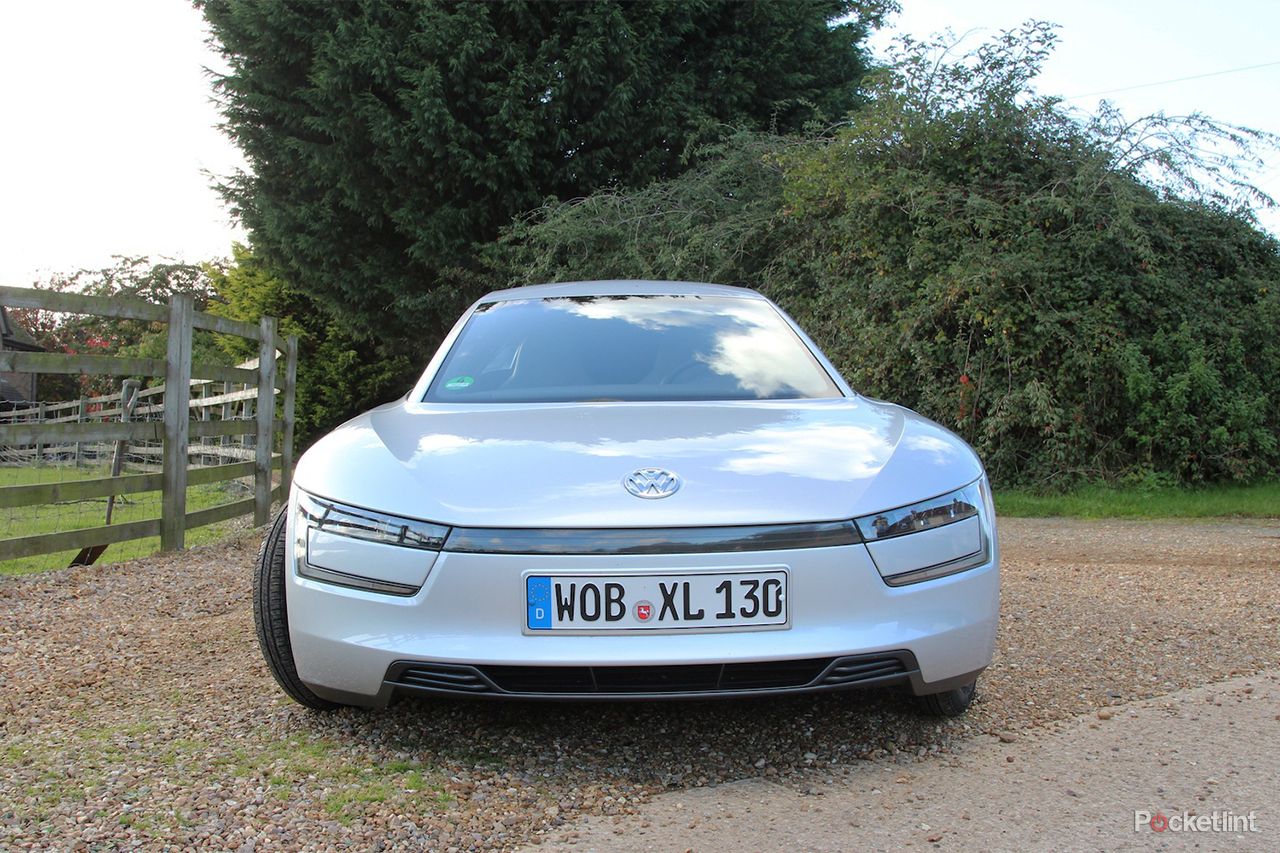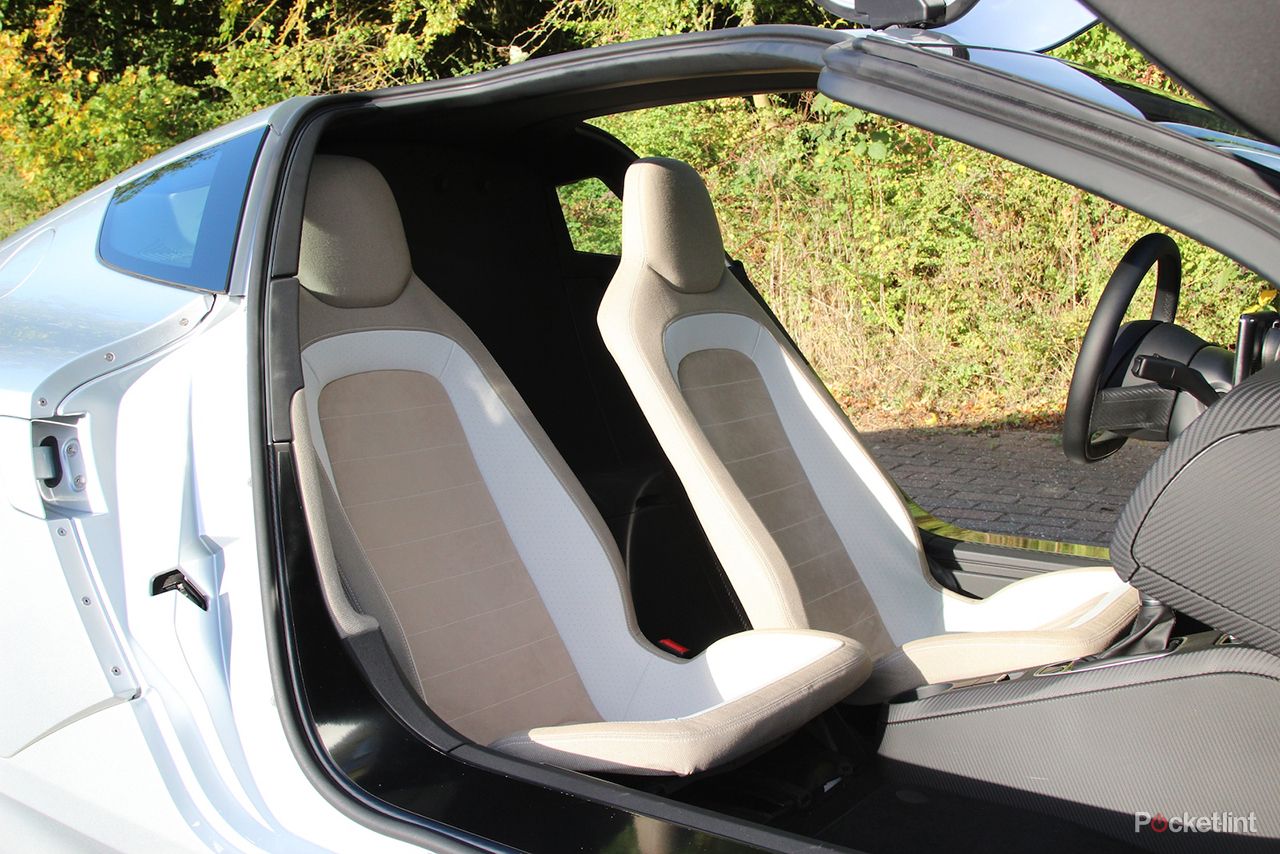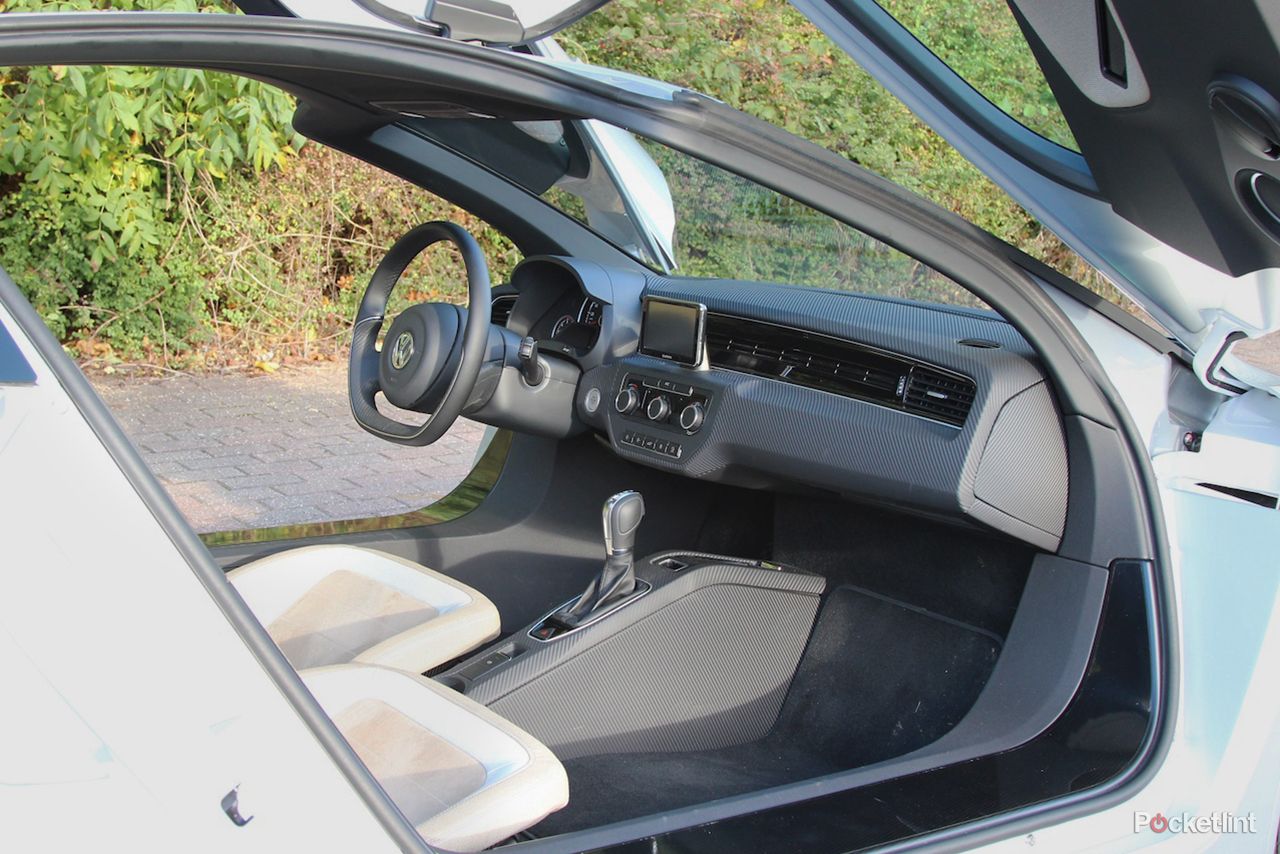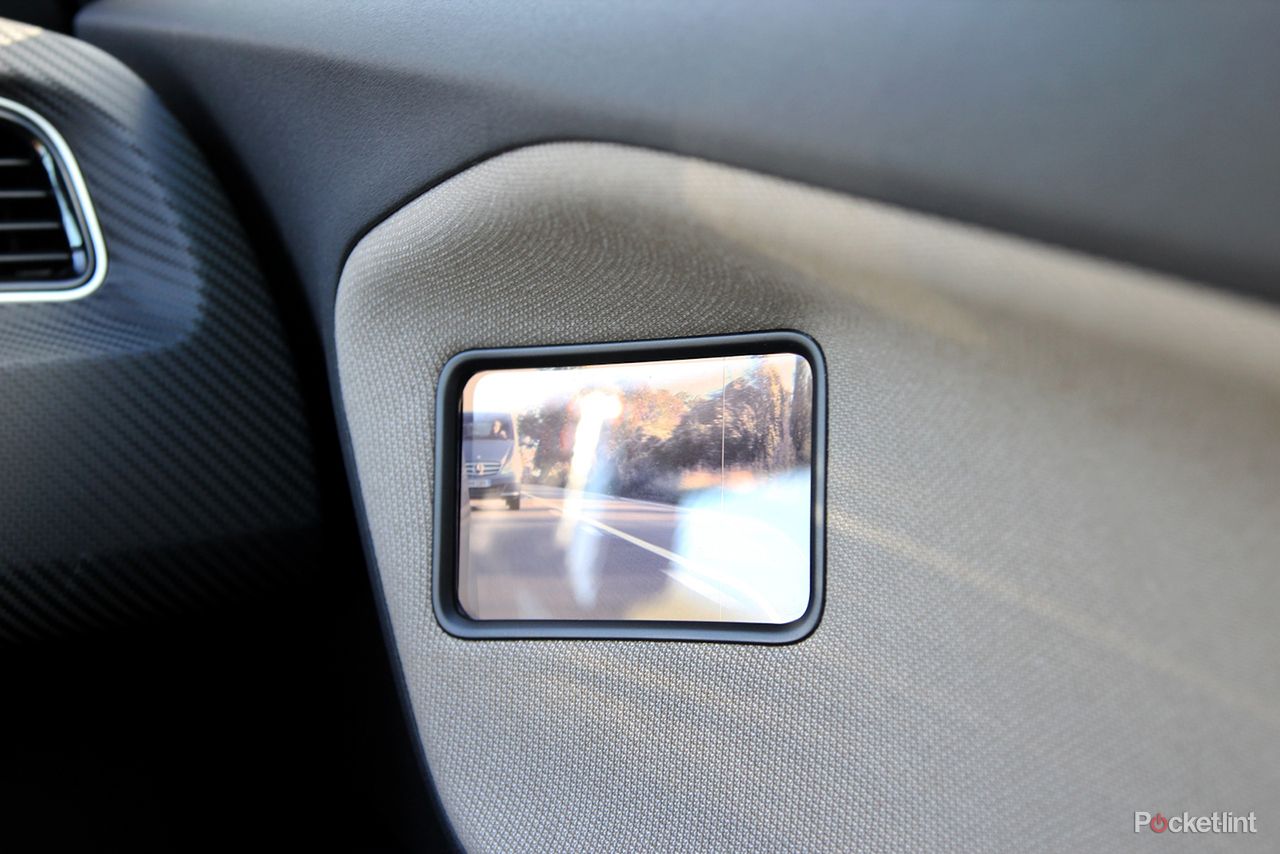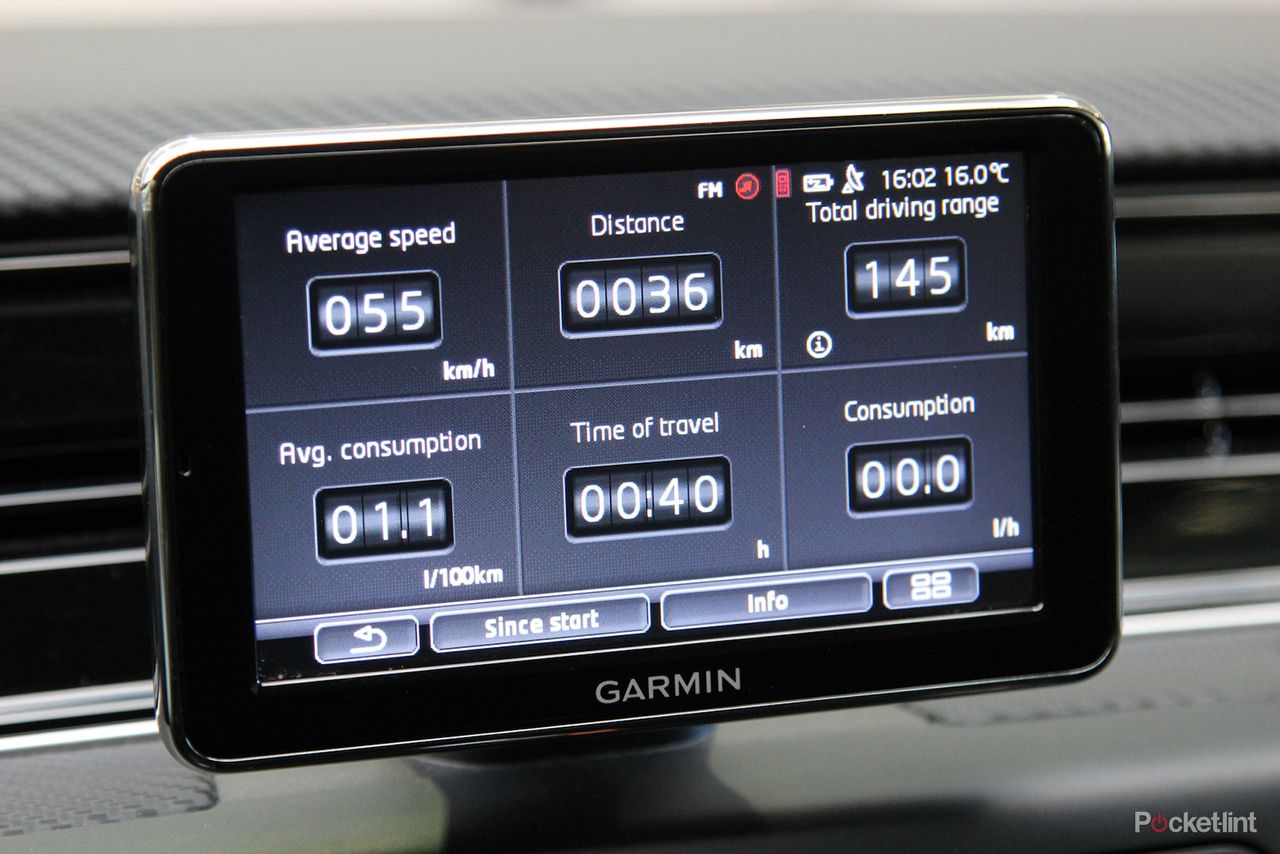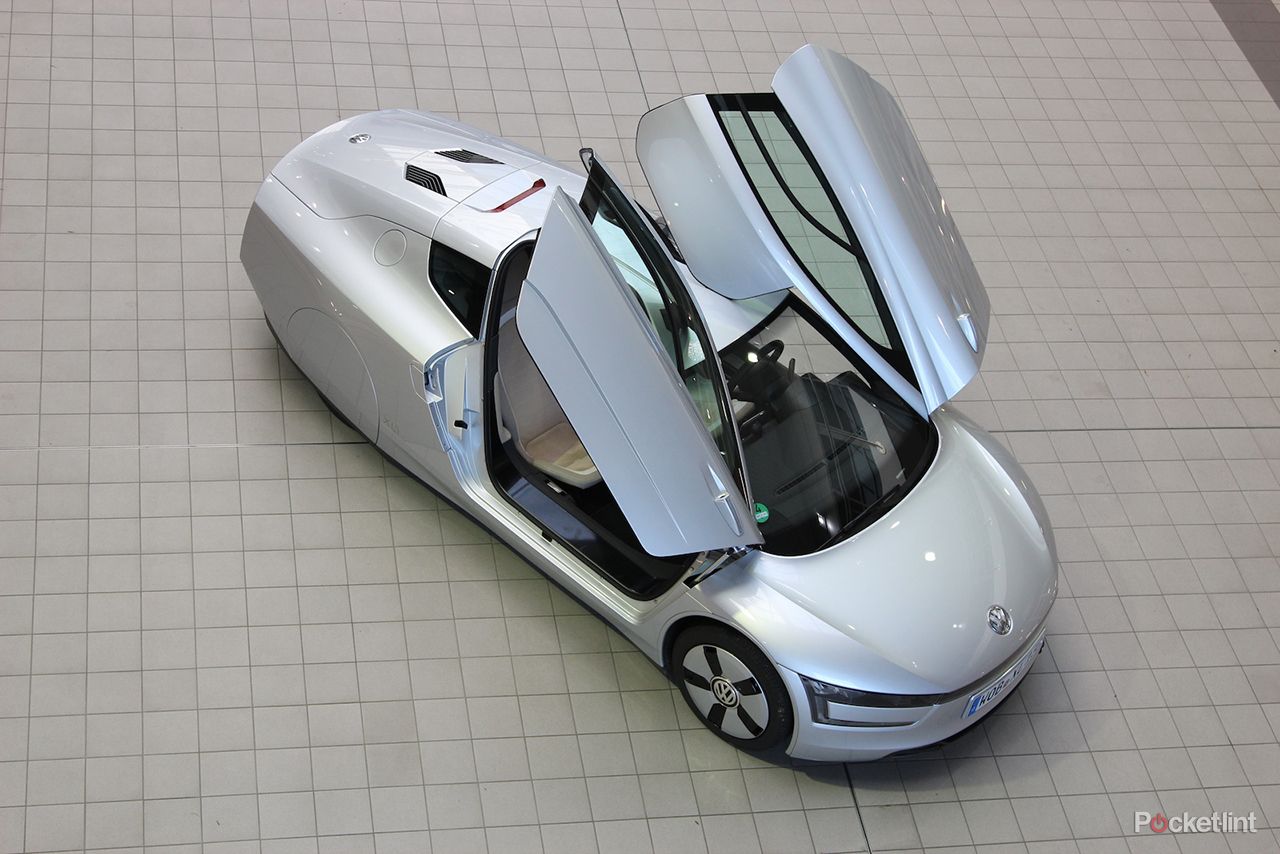As a kid, if someone had asked you what cars were going to look like when you grew up, we’re betting you wouldn’t have imagined them looking like the Volkswagen XL1.
If you were a child of the 60s - the era of Concorde and the space race - perhaps you imagined cars were going to fly. If you were child of the 80s, then a combo of Doc Brown’s gullwing Delorean and Athena posters of a Lamborghini Countach probably had more influence on your view. Either way, cars of the future were going to be cool. And boy, were they going to be fast. Or so we thought.
The XL1, however, is not fast. But more than anything else we’ve driven so far in 2013 - in fact, ever - it represents the future. This electric hybrid’s promise? To travel 250 miles on a single gallon of diesel.
It’s tempting to see that as a failure of historic visions of the future - where pioneers dreamed we’d go farther, and faster. But in 2013, efficiency is the new fast. The good news is that we’re not talking Prius-like hair shirt, an almost apologetic efficiency, we’re talking efficiency made cool.
With a minuscule kerb weight, a carbon fibre construction, cameras instead of mirrors, and a better drag co-efficient than any car on sale today, the VW XL1 oozes cool. Oh, and while its doors might not be true gullwing in the strict definition of the term - Merc gets that right - they nonetheless open in an upwards, scissor-like motion, just like a Lamborghini’s. So at least part of your childhood dream is still alive.
READ: Mercedes-Benz SLS AMG GT Coupe pictures and hands-on
To understand the XL1, you need to know about where it has come from. It is the vision of one man, Mr Ferdinand Piech. Back in 2002 - when Piech retired as chairman of the board of VW management - he drove a car called the 1-litre concept to the shareholders' meeting in Hamburg. The car was so called because it used just 1-litre of diesel to cover 100km.
Everyone thought the idea a pipe dream, but never one to be underestimated - Piech "fathered" the Bugatti Veyron too - the idea was pushed on within VW and, in 2009, a more finished-looking development, known as the L1, was unveiled. Two years later, this morphed into concept XL1, first shown at the Qatar motor show, nigh-on identical to the car you see here. Just 250 of the XL1 will be made.
You want to know what it’s like, right? To look at, be in and, ultimately, drive. And the answer is simple yet complex: because it’s unique; truly unlike any other car we’ve driven, including many electric ones. Yet contrarily, such is the might of the VW group parts bin and the cleverness with which this thing has been developed, that anyone could drive it with ease.
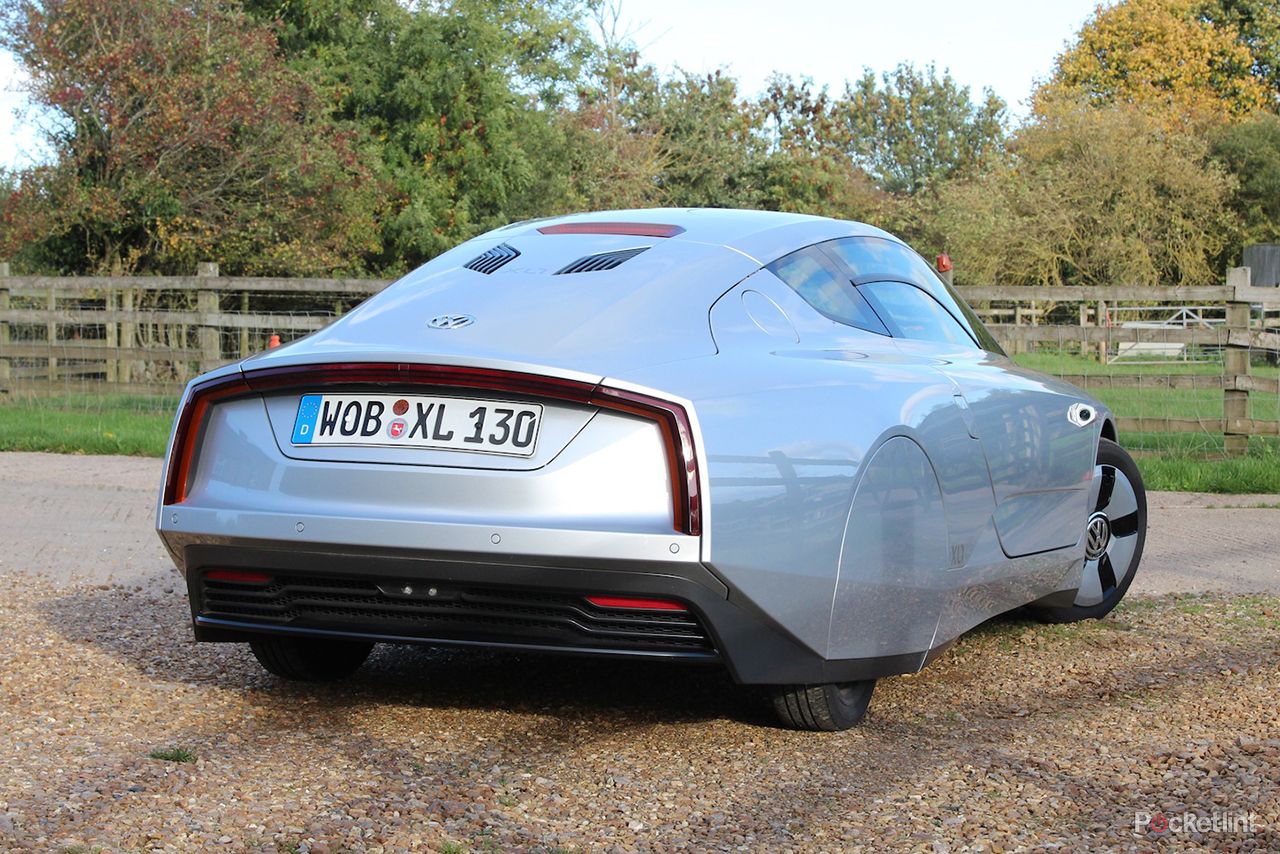
From some angles, the XL1 looks like one of those Shell Eco-marathon cars. It’s wider at the front than the back, has no wing mirrors, is narrower than a VW Polo and lower than a Porsche Boxster. It’s also strictly left hand drive - the battery pack part of this plug-in hybrid diesel powertrain sits ahead of the passenger’s feet. This means your passenger - in our case VW’s technical expert called Steve - sits to your side, but also slightly behind the driver.
Walk up to the car, stoop to push the handle and simultaneously grab the door, and there’s that futuristic excitement to watch it climb up and away on its gas struts. Next thing you’ll notice is the wide sill. The XL1’s made for the most part from CFRP (carbon-fibre reinforced plastic) and it’s primary safety cell, or tub, is carbon fibre. To ensure decent crash protection, the sill is wide and requires hopping over. If you’ve been in a Lotus Elise, it’s a similar thickness. But the XL1 is nothing like as hard to get into as the Lotus because the door opening is massive and the sill is low - not high.
READ: Lotus Elise S review
Step in and drop low into the thin, shell seat - again, Elise owners might feel at home - and there’s no doubt you feel low to the ground, with your feet out in front of you.
Reach under the seat, grab the conventional handle to haul yourself towards the wheel, and as you move forward, the seat rises too. The runners are inclined, so that the view out is as good for short drivers as it is for tall. Initially the seat feels flat as a park bench, but reach to the left of the adjustment rail, and a second handle allows you to alter the pitch of the seat, so you can create a much more bucket-seat-style driving position should you wish. It feels more like a sports car racer than some eco-car.
Reach up and out to yank the - surprisingly light - door down and shut. And it’s then you’ll realise the reference points are slightly odd. The windscreen seems miles away. And there are no sun visors, for heaven’s sake.
Later, as we trundle out on to the roads around Milton Keynes, we realise our sunglasses stay firmly stuck to our heads, best Made in Chelsea style impression adopted. The way the XL1’s cockpit is contrived means that even on this autumn afternoon with the sun low in the sky, we never need visors or shades.
The side window - which isn’t glass - is split into two parts. The inner section is lowerable but - shock horror - there are no electric window switches. Instead, hidden in the lower door is a tiny fold-out window winder handle. It looks like it’s been inspired by the handle on a wind-up-radio. But a cool one.
Settling in to the drive, we realise that not just one, but three of the biggest natural driving reference points have gone. Not only is there no rear-view mirror - the engine, gearbox and motor are behind the driver’s head - but there are no rear-view mirrors either.
Instead, the XL1 is the first car to be allowed on the road with rear view cameras in place of mirrors. The size of a smartphone screen, they give an almost full 180-degree view behind the car - the only bit you won’t quite get is the dead centre at the rear. Why no mirrors? Because conventional mirrors add so much aerodynamic drag.
This is a story played out again and again with the XL1. Every single shape and component is lighter, more streamlined and generally rethought in order to reduce weight, consume less energy, or cut through the air with less resistance.
Given all of this, you might be expecting the XL1 to drive via a joystick, or be started by a pair of dice and the need to throw a double six. But no,the XL has a tiny, squared-off VW steering wheel. In the footwell there are two conventional pedals, and sprouting from the centre tunnel is a convention automatic shifter. As with most automatic cars, starting up is as simple as putting your right foot on the brake and thumbing the start button on the dash just behind the wheel.
Except there’s no starter motor chunter in the XL1, merely a slight whirr and then a "ready" indicator on the instrument binnacle - which looks like it’s come out of a VW Up. Via the Pavlovian misstep of reaching to adjust the non-existent rear view mirror, we pull the shifter back into drive, press the electronic handbrake off and then slowly the XL1 creeps forward.
For all the unusual qualities we have described in the cabin, what’s clever is that the switchgear is so logical and so VW that it’s actually very easy to get in and drive off. It’s when on the move that the real fun - and differences - start to become apparent. The steering, for anyone under 30, will feel heavy at parking speeds. It’s not actually that bad, but the XL1 is so light, VW deemed it not to need power assistance because it would add more weight to the build, which comes as a shock in 2013 where every car has power assistance.
Out on to the road, the next oddities are those mirrors - sorry, cameras - as the picture they give is super-crisp and clear. Anyone who’s used to murky rear view cameras on current cars will think they’re a revelation in picture quality. Yet looking down into the door to "look in your mirrors" really takes some getting used to. And not having a whopping great mirror stuck on each door is strange - it’s realisation as to how much forward vision they block up on a normal car. But also how much they’re used as positional markers, to guesstimate how you’re placing the car on the road and how wide the car is.
Like other electric cars, acceleration seems good. The XL1 is a plug-in hybrid, with a pure electric range of around 20 miles in the real world. But its point is to get you as far as possible using as little as possible on the combined electric motor and nine-litre diesel tank. In that regard, it’s not quite the same approach as the Chevy Volt - which uses up all its battery and then calls on the "generator" motor to keep it going. With the XL1, if you’ve the EV button on the dash pressed, it will stay in electric mode most of the time, but if you floor the throttle it’ll still bring in the two-cylinder diesel for extra support.
We accelerate swiftly on to the national speed limit dual carriageway without calling the diesel into life. And it’s once up to speed that the really clever bit happens. Unlike most electric and hybrid cars we’ve driven, if you lift off the accelerator in the XL1, it just keeps rolling. There’s no regenerative braking in this mode to suddenly drag speed off by the chunk.
"Surely that’s counter productive?" we query to our man Steve. But no, this is the XL1’s key trick. Its lightweight, and super-low 0.19 aerodynamic drag co-efficient means that VW’s engineers worked out it was better to allow the car to simply keep on moving, rather than trying to harvest energy back into the battery - which would simply be cancelled out a few seconds later by the driver needing to accelerate again to maintain a constant speed.
So instead, we hit 70mph, lift-off, and the car simply keeps going at 70mph. About 15 seconds later, the digital speedo dips to 69, and a few seconds after that 68. A minute down the road and it’s dropped to 65, so we apply the accelerator lightly and the process repeats - covering miles of dual carriageway on seemingly sips of energy and still without tucking into the diesel motor.
Pull the gearshifter down into S, and we call up the diesel engine for more responsiveness and greater power. In this mode, there is some regenerative braking to recharge the battery.
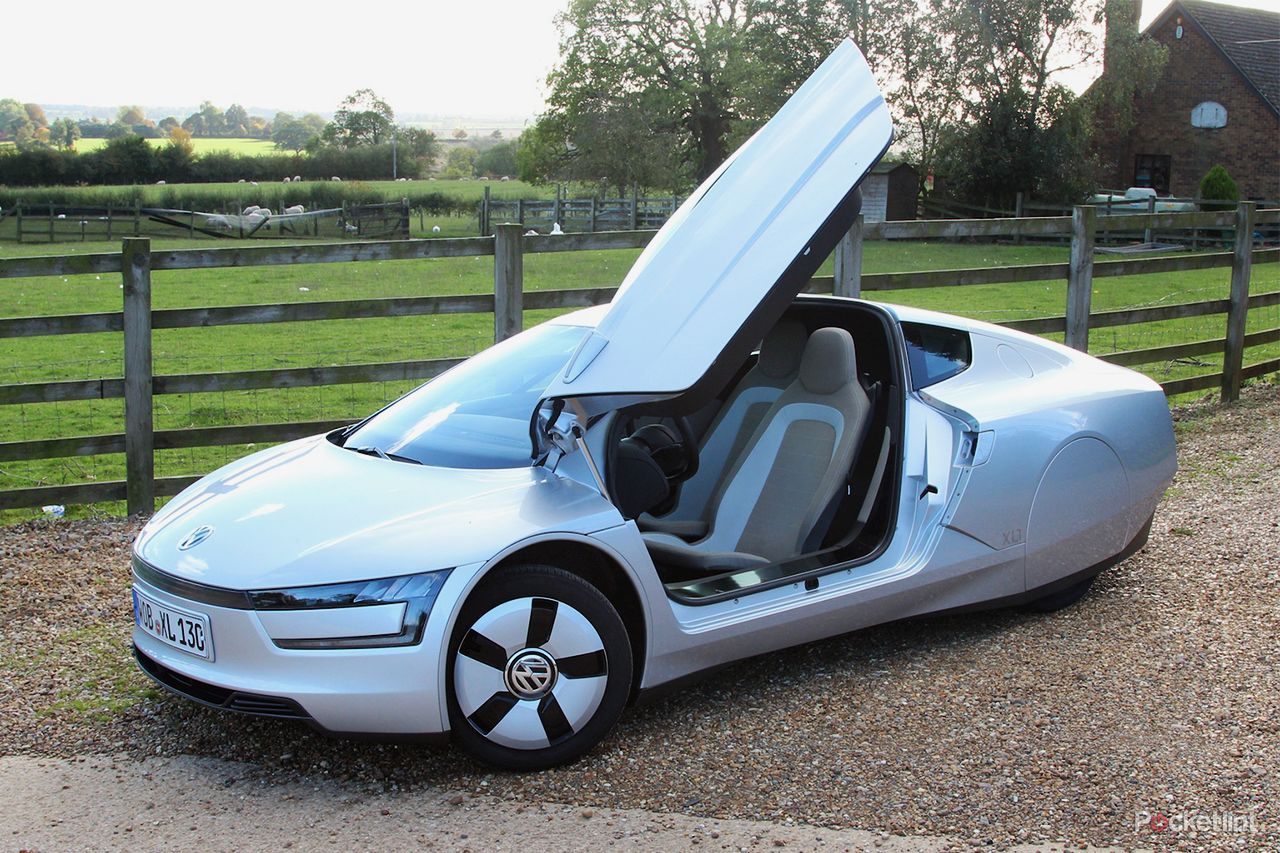
It makes an amusing little thrum too, that two cylinder engine. Not particularly tuneful, but not bad either. But you will hear it because of it’s behind-your-head position, sitting in-line with the 7-speed DSG gearbox and electric motor. At times, the ‘box can be heard shuffling the cogs about. Which is something you never hear in a conventional car, but is actually quite refreshing in a world of almost duvet-like insulated modern cars. It creates a connection between you and the car, the XL1 clearly communicating how it’s moving itself down the road.
The carbon disc brakes - again carbon because it’s light - make a bit of noise when you really lean on them too. And what did it ultimately most remind us of driving? A Lotus Elise, oddly enough.
Just 45 minutes into our drive and it’s time to roll back into VW’s technical centre. But what a fun 45 minutes with what is one of the most interesting drives we can remember in recent times. It felt fun but more importantly it felt different and special.
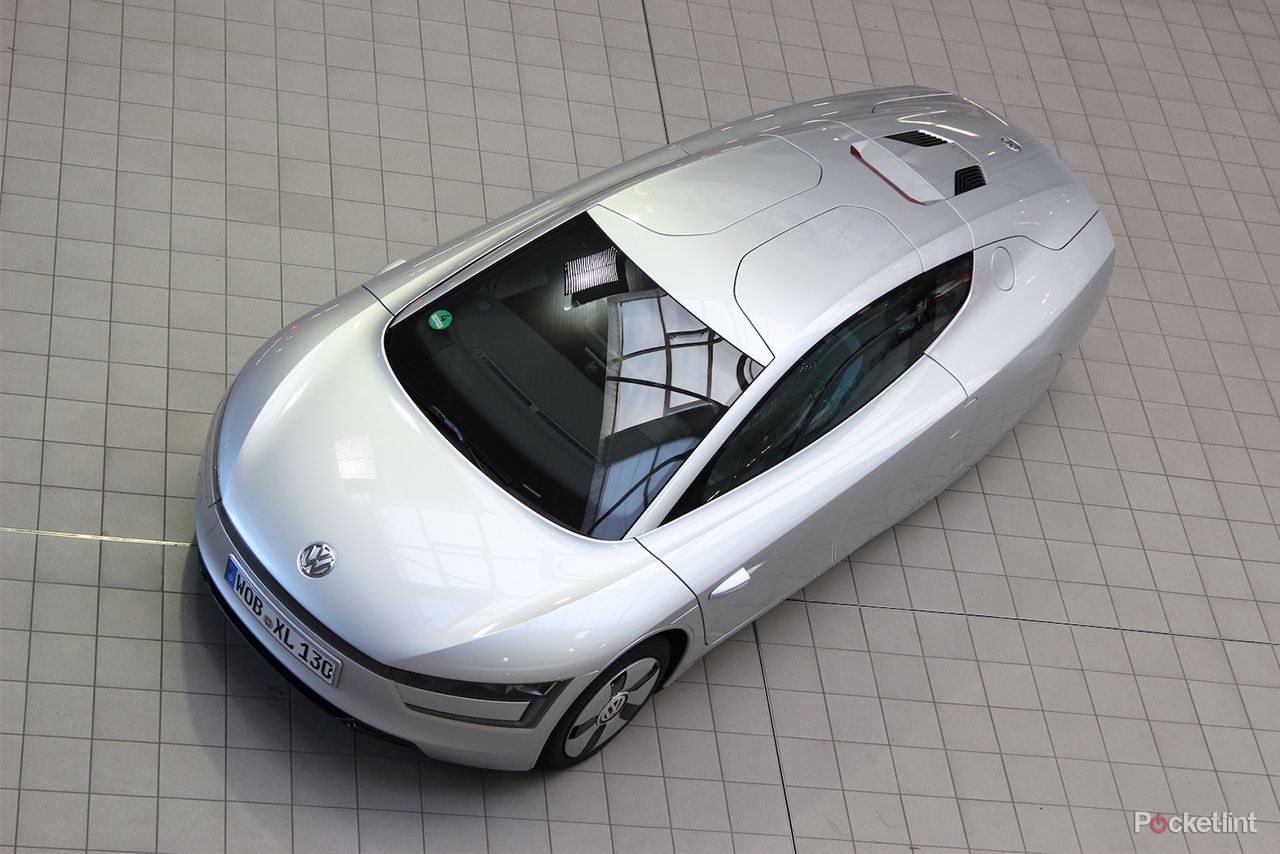
And, as we find out, it averaged just 276mpg - a figure calculated by our man Steve based on our actual drive, which included moments of foot-to-floor driving and some screeching round bends.
Stepping out and looking back at this diminutive streamliner on the VW centre’s floor, it’s hard not to be impressed by what VW has done. There’s even room in the boot for an airline carry-on bag and a load of other clobber.
We’re not going to get into the scurrilous, easy-target practicalities of how you change the wheel if you get a puncture. Or how much it might cost should someone with a Citroen Picasso dent your carbon door in Sainsbury’s car park. Or why VW is making only 250 of the XL1. Calling it out based on those things would be to entirely miss the point.
Instead, we’ll admire what VW is doing in pushing forward the notion of the car. Just how far we can go on one gallon of fuel, in a different and interesting way. If you’ve put your name down to get one of the 30 cars that will make it to the UK, you simply must follow that order through and then, please make sure you drive it rather than simply hiding it away.
At what is rumoured to be somewhere between £90 and £100,000 when the official price is announced, many will say the XL1 is irrelevant and over expensive for what it is. Jeremy Clarkson isn’t going to be on the sign-up list either.
Having spent a few hours with one, we take quite a different view. At £100,000, it would be a bit of a bargain. More to the point, this really is a supercar. Unlike that Lamborghini Countach of our youth, it will never grace an Athena poster (or whatever today’s equivalent is). Yet it proves as equally shocking, poses more important questions, and on the roads of today perhaps even provides a more special, rewarding and useable experience than the new breed of mega-horsepower supercars from McLaren, Ferrari and Porsche.
This might sound absurd, but drive it down a high street, and it will - like the Countach did back in the 70s - cause people to walk into lampposts as their heads swivel in awe. It looks like a concept car that you see in pictures, not on the road. It might sit at the polar opposite extreme of the supercar picture to the likes of the Bugatti Veyron but it is as exciting a car, and surely poses more important questions about the future of the car; what is possible, what might come to be? How ironic then, that these two bookends of the supercar world - Veyron and XL1 - are the vision of one man: Ferdinand Piech.

